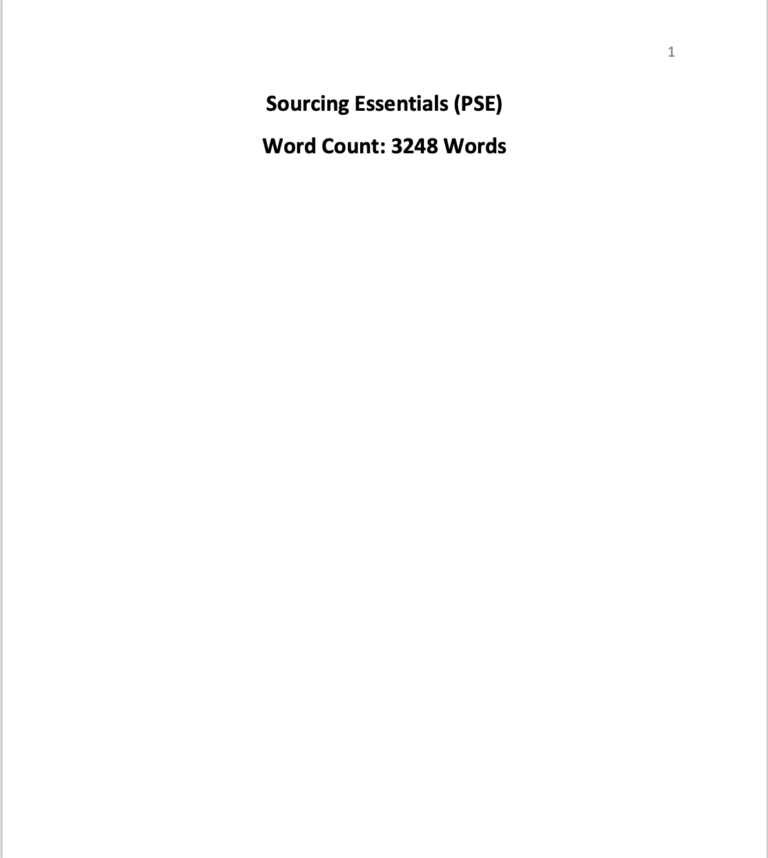Description
Solution
(AC3.1) Discuss the links between the employee lifecycle and different people practice roles
Employee lifecycle is identified as the process followed by an employee from the time of joining an organisation to their exit (CIPD, 2020). The different stages of employees lifecycle include;
Attraction- The best employees are attracted in an organisation by positioning themselves as an employer brand.
Recruitment- Through the embrace of various recruitment approaches, best employees are engaged in the organisation.
Induction- At the initial phase of the employees engagement in the organisation, support is offered to acclimatise themselves with the organisation.
Retention- By embrace of different strategies including total rewards, the best employees are retained with turnover mitigated.
Development- For improving the employees performance, career growth opportunities are recommended and offered to the employees.
Exit/Separation– Exit interviews are done in this phase to identify reasons of employees leaving the organisation either willingly or unwillingly.
Role of people professional in Recruitment
In this step, the people practice professionals execute various roles as part of recruitment including development of main specifications. According to Nikolaou (2021), these are embraced to advertise job roles, technology use and best practice embraced. The outcome of recruitment aids in selection of the most qualified employee.
Roles of people practitioner in development
In the stage of development, this include the people practice professionals working in development of the essential skills to guide their career growth and improvement. As evidenced in Armstrong and Taylor (2023), in line with competencies demands in an entity, recommendation on most appropriate development strategies is provided by people professionals.
Roles of people practitioner in separation
At the phase of separation, the people practice professionals assist in exiting by working on gathering data to understand reasons for exit and come up with strategies for managing future turnover. Also, the employee is supported and facilitated to exit the organisation.
Please click the following icon to access this assessment in full
Related Papers
(Solution) CIPS MER Practice role in Positive Contribution to Organisational Success
- It is unclear on how collaborative relationships is achieved in the supply chain since there are multiple stakeholders with varying interests. There is hence a need for embracing technology to enhance how the relationship with all stakeholders is pursued
- The global supply chain success is impacted by external events. This creates inefficiencies in the supply chain. These could be managed by putting in place appropriate systems for increasing value for money outcomes in times of uncertainties.
- Engagement of colleagues and other internal stakeholders for promoting organisation commitment to achievement of effective supply chain management is unclear. It is hence important to consistently improve the scope of engagement for improving consistency in value for money outcomes, fair-based practice and innovation embrace
(Solution) CIPD 5C002 how people practices could add value at Technivara and identify two methods that might be used to measure the impact of these people practices
(Solution) New Avado 5C002- Evidence Based Practice
Assessment ID / CIPD_5CO03_23_01 5CO03 Professional behaviours and valuing people
(Solution) CIPS Sourcing Essentials Assessment
- In this assessment, sourcing approaches have been identified and holistically reviewed. This is in line with RCU organisation IT spend category. This is further compared with payment services, document management category which is office suppliers and postal services.
- For evaluating the identified spend categories, various tools have been selected which are Kraljic Analysis Tool, Mendelow’s Analysis Tool for Stakeholder analysis and the Maslow Hierarchy of needs.
- Further, by using the SWOT analysis, the internal and external factors of the sourcing have been selected. A further analysis by use of Peter Block Grid’s has been applied to evaluate the interests of stakeholders to source appropriate position.
- The findings indicate that RCU adopts the best sourcing approach based on their needs.
- Finally, by using Carter’s 10Cs model, the best practice for pursuing suppliers appraisal has been provided for IT spend category.



